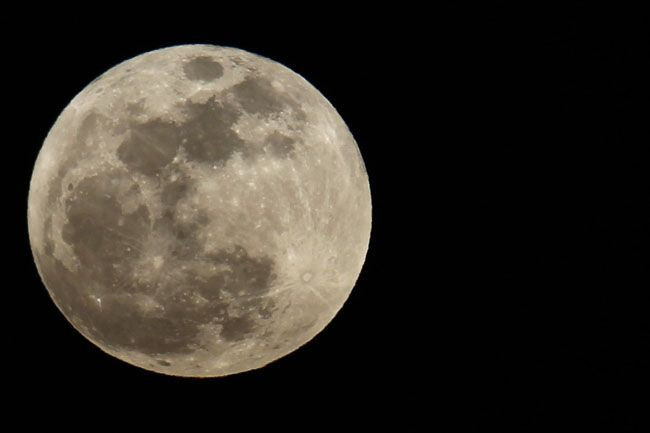
Never let it be said NASA doesn't know how to throw one hell of a retirement party. The organization is waving farewell to two of its employees in grand style Monday, sending them off the best way it knows how: giving them a one-way ticket to crash into a mountain on the moon.
NASA will send two of its decommissioned probes to a crash landing on the moon Monday, according to The Register. The Gravity Recovery and Interior Laboratory (GRAIL) ships, Ebb and Flow, will be intentionally crash-landed on the Moon because their low orbit and fuel levels inhibit them from continuing their missions, which mapped the lunar gravity field with more precision than any other object in the solar system, according to space.com. Data from the GRAIL probes also allowed scientists to learn about the moon's internal structure and composition in unprecedented detail.
"The two craft have generated the highest-resolution gravity field map of any celestial body, which will help NASA understand more about how Earth and other rocky planets in the Solar System formed and evolved," reported the Register.
The first results from GRAIL's primary mission were released by scientists in early December and provide vivid detail of the moon's surface. Gravity mapping displayed "lava-filled dike features buried beneath the lunar soil, evidence the moon expanded in size in its early history," said Space.com.
"There is no record whatsoever of these features at the moon's surface," Zuber said. "If any record existed, it would have been wiped out by these early impacts. These dikes actually provide evidence for early expansion of the moon just after it formed."
NASA will stream the spacecrafts' crash beginning at 5 p.m. EST and will provide live commentary from the control room at NASA's Jet Propulsion Laboratory (JPL) in Pasadena, Calif. Coverage will last about 35 minutes and include live interviews with GRAIL team members.
"It is going to be difficult to say goodbye," said GRAIL principal investigator Maria Zuber of MIT. "Our little robotic twins have been exemplary members of the GRAIL family, and planetary science has advanced in a major way because of their contributions."
Before the twins collide with the surface of the moon, though, they'll take part in one final mission. NASA scientists will fire the main engines on the probes until their propellant tanks are totally empty so that NASA can measure precisely how much fuel they have left, which will help engineers to improve predictions about how much fuel missions need.
"Our lunar twins may be in the twilight of their operational lives, but one thing is for sure, they are going down swinging," said GRAIL project manager David Lehman of NASA's Jet Propulsion Laboratory. "Even during the last half of their last orbit, we are going to do an engineering experiment that could help future missions operate more efficiently."
Ebb and Flow will make impact with the moon's surface at 3,760mph, with Ebb going down first, followed 20 seconds later by Flow, reported Space.com.
"We have achieved everything we could have possibly hoped for in terms of observations," Zuber said. "Frankly, in my wildest dreams, I could not have imagined this mission would go as well as it has."
© 2025 Latin Times. All rights reserved. Do not reproduce without permission.




